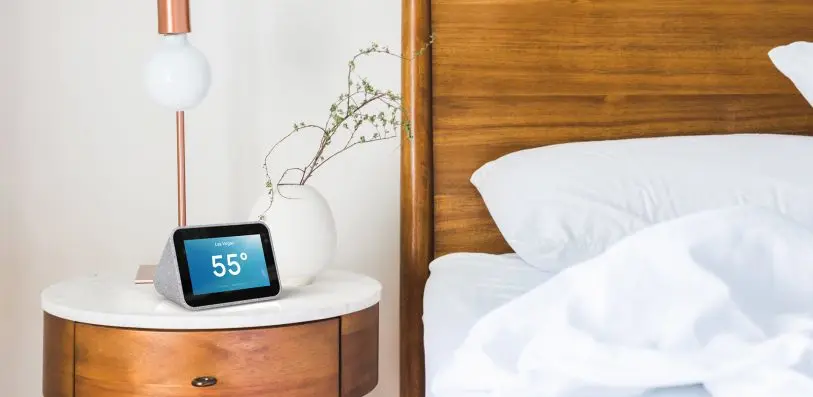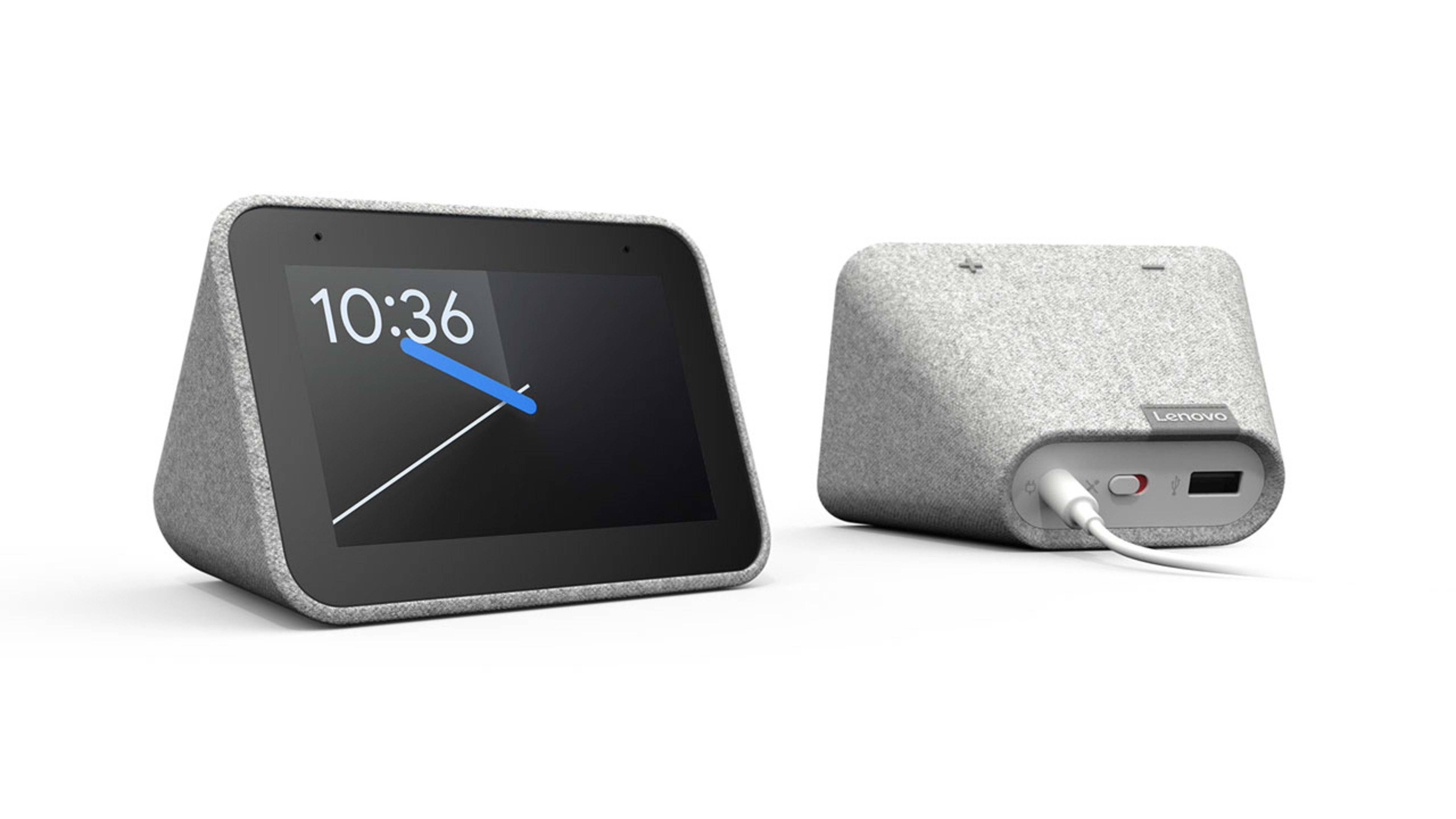Whenever I wake up in the middle of the night, I indulge a bad habit of looking at my smartphone. It starts off innocuously enough, with me wanting to check the time, but then I notice an email or Twitter notification that sets my mind in motion, and I have a harder time falling back to sleep.
The $80 Lenovo Smart Clock is supposed to help kick the habit. Its 4″ screen shows the time and provides alarms, of course, but it also responds to Google Assistant voice commands for checking the weather, playing music, controlling smart home devices, and summarizing the day’s agenda. Google sees smart clocks as a new product category for its virtual assistant, and hopes that they’ll provide just enough connectivity to spare us from getting sucked into our smartphones at night.
“You can imagine our goal, like, maybe you don’t need your phone anymore in your bedroom,” Mert Topcu, a Google Assistant product manager, told me in January, when the Smart Clock was first announced. “You don’t need to pull out your phone, for example, right before you go to bed, and then find yourself spending an hour on social media.”
Having slept with the Lenovo Smart Clock on my nightstand for the past week, I can’t say that it’s met that lofty goal. As a geeked-up version of a bedside clock, Lenovo’s Smart Clock is fine. But in trying to simplify our digital lives, it also introduces a bunch of new complications.
A stripped-down Smart Display
Compared to other “Smart Displays” that run Google Assistant, such as the Google Home Hub and Lenovo Smart Display, the Lenovo Smart Clock is notable for what it excludes.
There’s no camera, because it’d be weird to have one pointing at your bed, and you can’t use the tiny screen to watch videos or browse the web, because why would you want to? Google doesn’t even suggest news clips, music stations, or voice skills to try, like it does on larger screens, nor does it present slideshows from Google Photos.
What’s left are several basic information screens you can swipe through, including one for clock faces, one for weather, another for alarms, and one more for upcoming appointments, plus a playback control screen that pops up when music is on. You’re clearly not supposed to spend much time tapping on the touchscreen.

Similar oddities emerge when you’re trying to set alarms. While you can use the Smart Clock’s touchscreen to create an alarm, you must use voice commands to wake up with music instead of sound effects. If you want to wake up with news, or have smart lights turn on in the bedroom, you must instead create a “Good Morning” routine in the Google Home mobile app. That’s a lot of user interface confusion for a device that’s supposed to reduce digital distractions.
Those Good Morning routines also have their own issues. They don’t allow you to adjust the brightness level of smart light bulbs–you can only toggle lights on or off–and they only work with whatever music service you’ve set as the default for Google Assistant. That means you can’t wake up with Pandora on the Smart Clock while using Spotify as the default on other Google Home speakers. And because the clock’s alarm only works with “Good Morning” routines, you can’t set up multiple alarms with their own unique automations. Even worse, my review unit routinely failed to trigger lights and music as part of the Good Morning routine I’d set up.
My overall impression is that the Smart Clock software is still half-baked. It’s too complicated in the areas where it should be simple, and too simple in the areas that demand more complexity.
As for Google’s idea of evicting smartphones from our bedrooms, that remains a long-term aspiration. Google Assistant can’t relay important calls or text messages from a phone, and while it can place outbound calls, it can’t send text messages. It also can’t read or summarize emails, like Amazon’s Alexa is starting to do. If you’re worried about being reachable in an emergency, or getting important information as soon as you wake up, relying on a Smart Clock isn’t going to help.
It’s a clock, stupid
It’s possible that I’m overthinking all of this. If you’re a fan of bedside clocks, and you’re interested in having a Google Assistant speaker in the bedroom, the Lenovo Smart Clock does a decent job of consolidating those desires into a single device. Its audio quality is about the same as a Google Home Mini, and it’s wrapped in similar gray fabric, so as not to scream “tech product.” And generally speaking, setting alarms by voice is easier than twisting knobs and pressing buttons on a cheap digital clock. Lenovo’s clock even has a USB port in the back for charging a phone. (Google’s Mert Topcu described this to me as a “meeting with them halfway” gesture for users who insist on having phones on their nightstands.)
Google, however, has presented Smart Clocks as something greater than just tech for tech’s sake. In the same way that smart speakers are meant for more than just music and kitchen timers, Smart Clocks are supposed to reduce screen time by providing quick hits of information, thereby letting us stay focused on the real world.
Whether that’s actually happening is up for debate. The night before finishing this review, I decided to leave my phone just outside the bedroom door instead of on my nightstand. When I woke up, I glanced at the Smart Clock and saw that I didn’t need to get up, so I rolled over to try and go back to sleep. Not having my phone to glance at produced a different kind of anxiety, though, and it didn’t take much tossing and turning before I caved and went to look at it. The only difference with the Smart Clock was that I knew how many minutes had ticked by in the meantime.
Recognize your brand’s excellence by applying to this year’s Brands That Matter Awards before the early-rate deadline, May 3.
